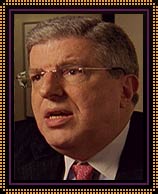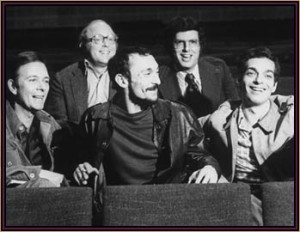 A child prodigy, Marvin Hamlisch began studying piano at the famed Juilliard School of Music when he was seven. He co-wrote his first hit song, the bouncy “Sunshine, Lollipops and Rainbows,” which Lesley Gore recorded and made a hit in 1965. He subsequently co-wrote another of Gore’s hits 1967’s “California Nights.” By this time, Hamlisch had already made in-roads into showbiz. In 1960, through a friend, he was introduced to Judy Garland and Liza Minnelli, and he played piano at a party hosted by Garland. Within four years, he was hired as the rehearsal pianist for the Jule Styne-Robert Merrill musical “Funny Girl” (1964), where Hamlisch first met Barbra Streisand. After serving as vocal arranger on TV’s THE BELL TELEPHONE HOUR (where he collaborated with such stars as Lena Horne and Tony Bennett), Hamlisch got his first break as a film composer through a fluke. He was hired to play piano for a party given by Sam Spiegel and so impressed the producer that Spiegel hired him to score THE SWIMMER (1968). The haunting themes he created did much to enhance this character study and his career seemed assured. He went on to work with Woody Allen twice (TAKE THE MONEY AND RUN 1969 and Bananas 1971) and scored THE APRIL FOOLS (1969).
A child prodigy, Marvin Hamlisch began studying piano at the famed Juilliard School of Music when he was seven. He co-wrote his first hit song, the bouncy “Sunshine, Lollipops and Rainbows,” which Lesley Gore recorded and made a hit in 1965. He subsequently co-wrote another of Gore’s hits 1967’s “California Nights.” By this time, Hamlisch had already made in-roads into showbiz. In 1960, through a friend, he was introduced to Judy Garland and Liza Minnelli, and he played piano at a party hosted by Garland. Within four years, he was hired as the rehearsal pianist for the Jule Styne-Robert Merrill musical “Funny Girl” (1964), where Hamlisch first met Barbra Streisand. After serving as vocal arranger on TV’s THE BELL TELEPHONE HOUR (where he collaborated with such stars as Lena Horne and Tony Bennett), Hamlisch got his first break as a film composer through a fluke. He was hired to play piano for a party given by Sam Spiegel and so impressed the producer that Spiegel hired him to score THE SWIMMER (1968). The haunting themes he created did much to enhance this character study and his career seemed assured. He went on to work with Woody Allen twice (TAKE THE MONEY AND RUN 1969 and Bananas 1971) and scored THE APRIL FOOLS (1969).
Marvin Hamlisch
- "A Chorus Line"
- "Funny Girl"
- "Henry, Sweet Henry"
- "Imaginery Friends"
- "Minnie Boys"
- "Seesaw"
- "Smile"
- "Sweet Smell of Success"
- "The Goodbye Girl"
- "They're Playing Our Song"
- Michael Bennett
- Donna McKechnie
- Bebe Neuwirth
- Bernadette Peters
- Ann Reinking
- Jerome Robbins
- Barbra Streisand
- Jule Styne
- Robin Wagner
Hamlisch turned his attention to the Broadway stage in the early ’70s, creating the music for the landmark Broadway show “A Chorus Line” (1975). While initial critical reaction overlooked the score in favor of the dazzling production and Michael Bennett’s outstanding direction and choreography, audiences responded to the music. (The ballad “What I Did for Love” has become a modern standard.) He shared a Tony Award for Best Score (with lyricist Edward Kleban) and the Pulitzer Prize in Drama (with Kleban and book writers James Kirkwood and Nicholas Dante). “A Chorus Line” held the record as the longest-running musical in Broadway history until June 1997 when Andrew Lloyd Webber’s “Cats” surpassed it.

Marvin Hamlisch sitting with group that includes Michael Bennett, the director/choreographer of A Chorus Line.
Hamlisch has found a secondary career as a guest conductor at American symphonies. In 1994, he served as the musical director for Barbra Streisand’s long awaited return to live performing. For the filmed version of the concert, which aired on both HBO and CBS, Hamlisch earned two Emmy Awards. Other TV credits include the scores for such series as BEACON HILL (CBS, 1975) and the lovely nostalgic theme to BROOKLYN BRIDGE (CBS, 1991-93) and such TV-movies as THE ENTERTAINER (NBC, 1976), THE TWO MRS. GRENVILLLES (NBC, 1987), and DAVID (ABC, 1988).
Source: Excerpted from Baseline. BaselineStudioSystems — A Hollywood Media Corp. Company.
Photo credits: Photofest and Martha Swope

